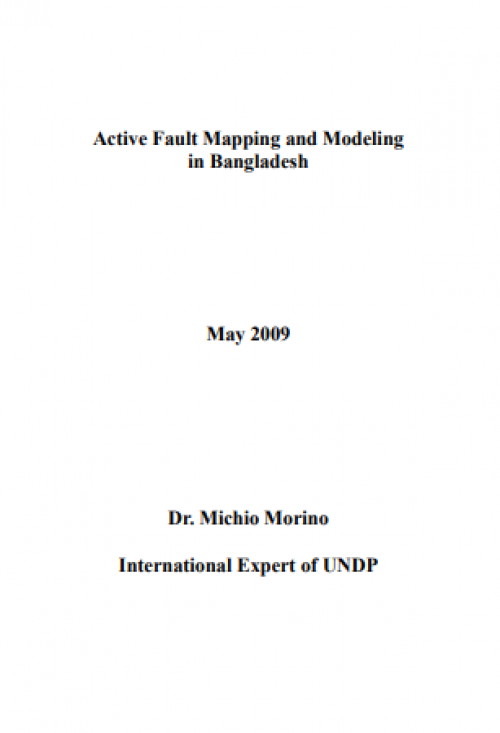Active Fault Mapping and Modeling in Bangladesh
Bangladesh has suffered severe damages from large earthquakes historically, viz., the 1548
earthquake, the 1664 earthquake, the 1762 earthquake, the 1869 Cachen earthquake (Ms 7.5),
the 1885 Bengal earthquake (Ms 7.0), the 1897 Great Assam earthquake (Ms 8.1), and the
1918 Srimangal earthquake (Ms 7.6) (Earthquake in website “Banglapedia”; Oldham, 1883;
Ambraseys, 2004; Bilham and Hough, 2006 etc). However, it seems that Bangladesh did not
experience any large earthquake since 20th century for about 100 years. The 1918 earthquake
is thought not to be a characteristic one, since the magnitude is small for the plate boundary
fault. This may mean that Bangladesh has a high risk of large earthquake occurrence in near
future. Several major active faults, e.g. the plate boundary fault (the northern extension of
subduction fault) and the Dauki Fault, are inferred in Bangladesh. These faults must generate
large earthquakes over M 8. However, the nature, detailed location, and the faulting history on
these faults are not well known yet.

| Title | Active Fault Mapping and Modeling in Bangladesh |
|---|---|
| Document Category | Earthquake |
| Document Type | Book |
| Circulation Type | Public |
| Publishing Date | May 2, 2009 |
| Language | English |
| Publisher information | UNDP |
| ISBN | N/A |
| Refrence Number | 432503-08-12-2021 |
